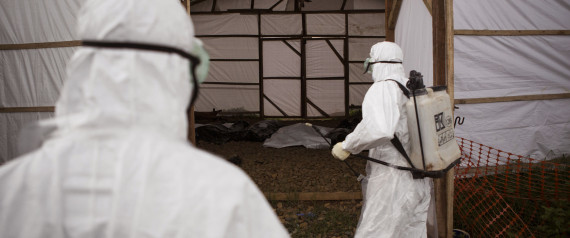
I am a Spanish doctor in Sierra Leone working with an NGO on the matter of Ebola which, as you know, has been hitting part of Africa for more than six months, and that now, unfortunately, has reached Spain. This was the first case of direct transmission of Ebola outside of an African country in the history of the disease.
We are launching in Bo, which is the second largest city in Sierra Leone, a center of isolation and treatment for Ebola patients. Both suspected and confirmed cases, are hosted in the center as the first symptoms appear, which is usually fever, displayed when disease begins to be potentially infectious. The pertinent tests are made and we take care of the patients until we have the results from the laboratory. If it is negative, the patient goes home, but a medical team will visit daily and will monitor the patient and his relatives for three weeks. If the result is positive, we start the intensive care and treatment of the patient.
So this is how it works in a country where there are, so far, over 2,400 positive cases and nearly 700 deaths, according to reports from the Health Department. Although there are probably more, considering that communication did not work very well and there may be many lost cases. It is known, thanks to the wide media coverage of this issue, that each infected person can infect 2-6 people.
Madam Health Secretary, with all due respect, something went wrong. And honestly, I think the information you are giving to the media in Spain on the sad and unfortunate case of an infected colleague, while still being true, is not entirely accurate. Here, on the ground, where we live the day-to-day of this disease, we have another point of view, and certainly very different responses from the ones the government and some officials are giving.
It is not my intention to distress anyone or create alarmist situations, but they are making up the facts. Or they are not saying things clearly. I do not want to believe it's on purpose, I prefer to think it is due to ignorance of the subject and not really knowing what they are speaking of.
You should be aware by now that the personal protective equipment, technically called PPE (Personal Protection Equipment, although I will call them protective suits to shorten up) which were used as protection were not adequate for this disease. As you may know, WHO has different degrees of protection according to the disease addressed, and Ebola requires the highest level of protection for its severity, high risk of infection and, above all, the lack of knowledge professionals have of it. The appropriate protective suits isolates completely from the environment -- there is not a micron of uncovered or unprotected skin -- and some elements are double, as in the case of the gloves.
My colleagues who regularly enter a danger zone, isolation zone or may be in contact with suspected or confirmed patients, in addition to wearing the protective suit, receive two weeks of training in a suitable center by qualified professionals. In our case, here in Sierra Leone, Doctors Without Borders (MSF) gives us the training, with professionals with greater experience, the ones who know best how to treat and manage Ebola.
Protective measures are much more than the protective suit and they are constantly carried out (spray with chlorinated water, containers for hand washing with chlorinated water in each corner, disinfection with this same type of water for shoe soles, etc.). Just so you have an idea: proper placing of the protective suit (PPE) takes about 10 minutes, and the removal of it is a process of about 20 to 25 minutes where some orderly steps are strictly followed and supervised by two people: one, continuously disinfected with spray; and another, who remembers the steps to follow. Even the experts in the issue, who go in and out of the risky areas several times a day -- because you can not be in a protective suit of this type for more than an hour due to dehydration risk -- even those widely accustomed to the long and tedious process to apply and remove the personal protective equipment, sometimes forget steps or they are wrong about the order of processes and protocols, and this can lead to infection.
To prove it here is this fact: over 90 percent of infected health workers (which are many), were infected by not following the proper protocols or for not wearing a proper protective suit, all due to human mistake. The other 10 percent were infected outside the work environment, by a relative, sex, etc.
Anyway, I will not bore you more, but it is all very complex and it is not surprising that unfortunately there has been a contagion. I wish this begins and ends here and that you learn of the mistakes (if any) and, above all, that everything goes well for the infected colleague.
Yours sincerely,
Dr. Jose Maria Echevarría
cred- El Huffington
No comments:
Post a Comment